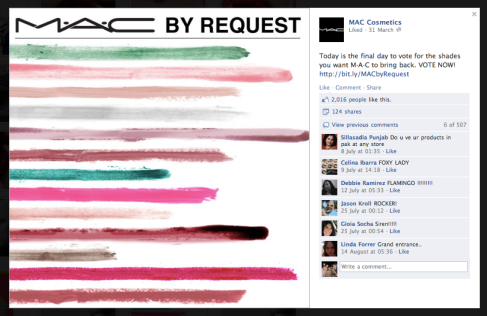As mentioned in my previous blogs, when done right, social media has proven itself to be a fantastic tool for generating conversation, and obtaining a valuable source of consumer feedback. With this in mind, organisations are beginning to realize the huge potential social media holds for facilitating market research.
Back in the day, organisations used to rely on focus groups, research and trend analysis to conduct market research, but now, with access to social media, life has become a lot simpler.
While some larger organisations are using social media as just one avenue in their market research campaign, other smaller companies, with limited resources, are relying heavily on social media platforms such as Facebook and Twitter, as cost effective ways to conduct market research.
According to Southern (2012), one of the most important ways to collect consumer research online is to become an active listener. How does one do that?
>Connect with your consumers on Facebook and Twitter to see what they are saying
>Follow the discussion-taking place on your page, and
>Check out other Facebook pages in your industry to see what’s being said. All of the information is widely available, it just needs to be sought after.
Another essential tool in market research involves generating discussion with consumers to gather information regarding a specific product/service. MAC Cosmetics used this technique when deciding on which shades of discontinued lipglass to bring back. Instead of conducting extensive focus groups, which can often be timely and expensive, MAC went online to the source and asked their social media fans to vote. By doing this, they were able to gather large amounts of data, quickly and cheaply, on which colours were favorites, and please the majority of their consumers by bringing back the most voted shade.
There is no doubt organisations can benefit from social media as a market research tool. It is a fantastic platform to gather data for an organisation, with numerous opportunities to gain “valuable insight into [the] industry and [the] target market.”

As having ‘liked’ MAC Cosmetics on Facebook, I have recently discovered their clever use of social media platforms and their ability to link them together so as to possibly reach a larger audience. I got onto their Youtube channel through one of their Facebook posts and am now addicted to watching their video makeup tutorials. I definitely think MAC Cosmetics has figured out the best way to engage with its’ target audience without directly and explicitly advertising to them.
Thanks for commenting! Really glad you picked up on the way they link their social media profiles, I spoke about this in mine (and Lucy Sundberg’s) Instructional Video. I’ve attached the link below if you want to check it out. And yes, MAC YouTube videos can take hours of your life, beware! Haha.